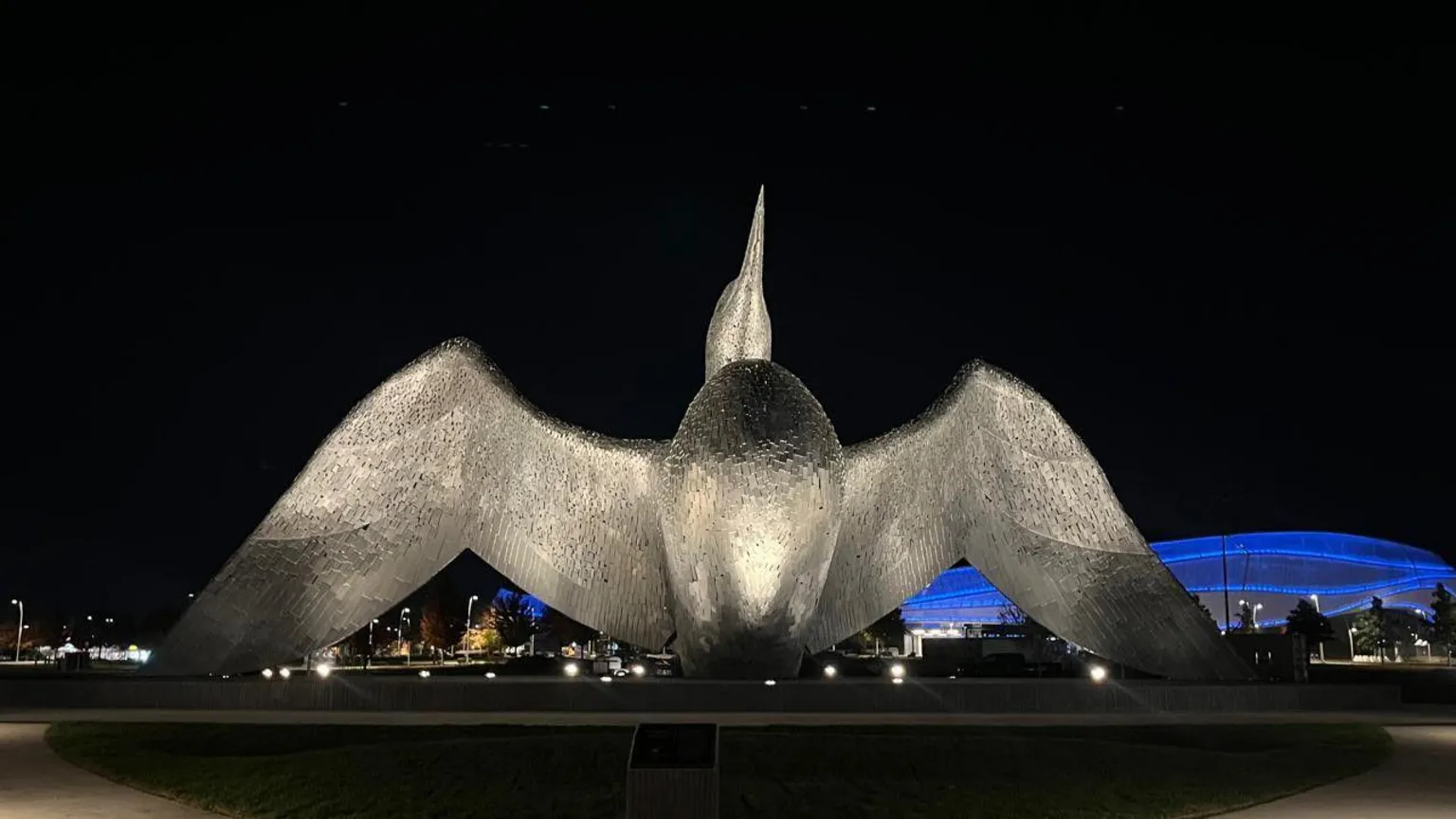Scottish artist Andy Scott, renowned for creating Scotland’s iconic Kelpies, has unveiled his latest monumental steel sculpture: a towering loon with a 98-foot wingspan outside Minnesota United’s Allianz Field, igniting discussions about public art’s role in community development.
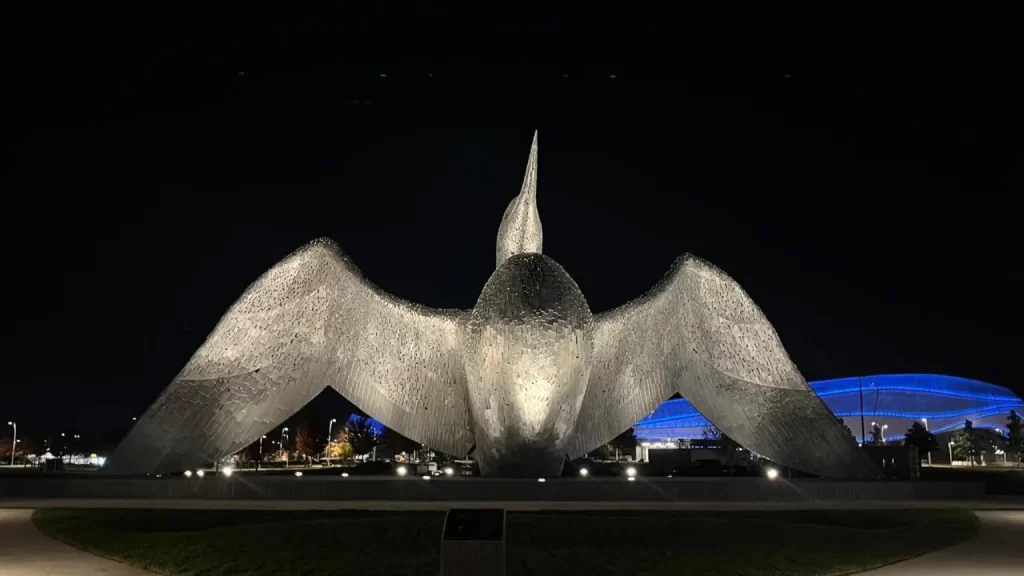
“The Calling,” commissioned by club owner Bill McGuire, stands 36 feet tall and celebrates Minnesota’s state bird while marking the latest chapter in Scott’s career, which began in Glasgow nearly two decades ago. The project reunited Scott with fellow Glasgow School of Art graduate Chris Dyson, whose fabrication company Dyson and Womack constructed the piece using traditional shipbuilding techniques.
“You’re going to think this is a bit daft, but the only thing I knew about the loon back then was that it had been sampled on various dance tracks I used to listen to back in the Sub Club in Glasgow in the early 90s,” Scott told reporters, describing his initial connection to the project.
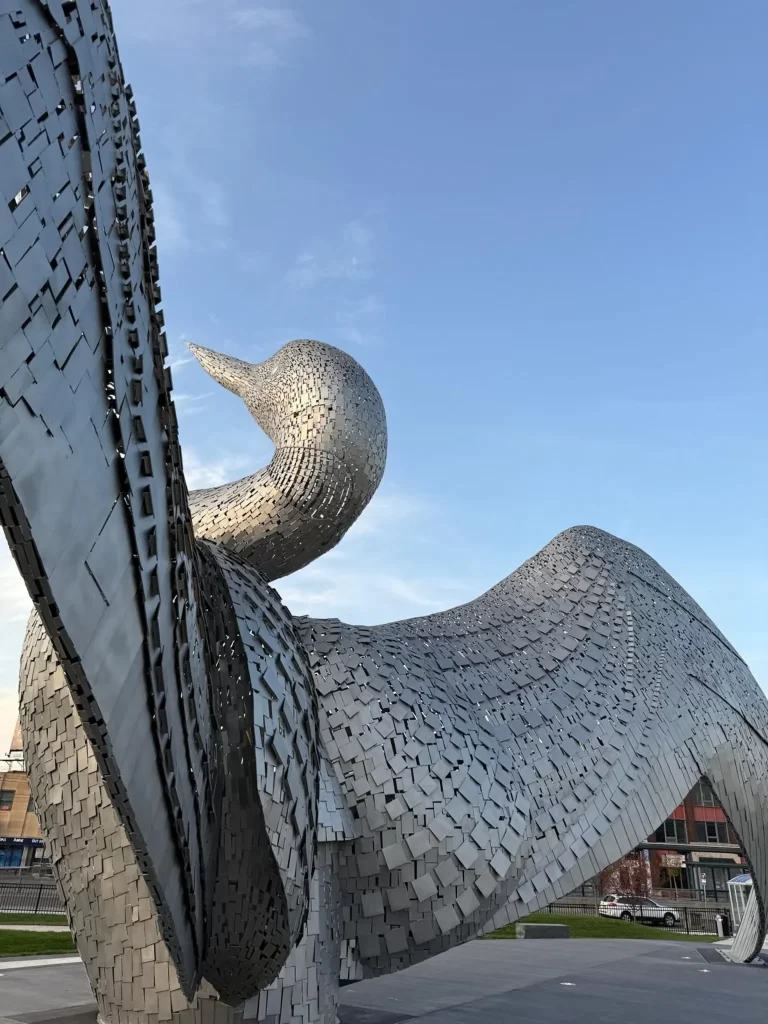
The sculpture, comprising 65 steel pieces assembled over 10 days, has drawn mixed reactions from the Midway neighborhood, an area still recovering from the protests following George Floyd’s murder and COVID-19’s economic impact. Local resident Dan Wade sees the artwork as part of the stadium’s potential to drive development: “As the stadium develops, I think we’ll see that change.”
However, local artist Fox Willis criticized both the artwork and its commissioning. “From a social perspective – as a poor community member who is passionate about housing and hunger justice – I am honestly appalled,” Willis wrote, arguing the commission should have gone to a local artist to reinvest in the community.
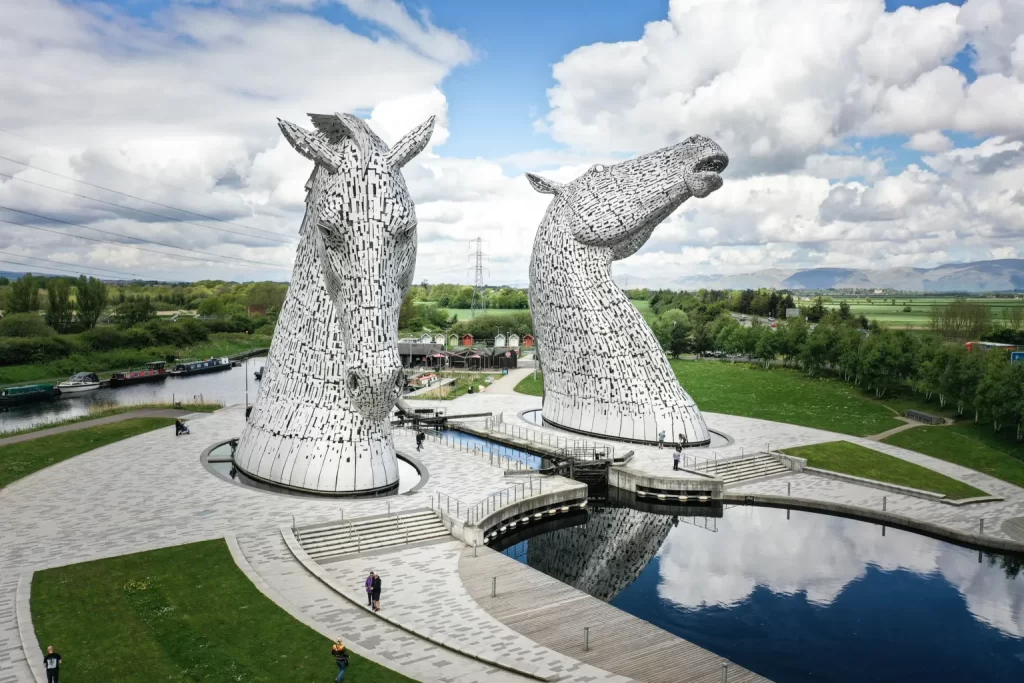
Scott, who has created approximately 90 public artworks, acknowledges such criticism while defending his approach. “With public art – you’re never going to please all the people all the time,” he said. “But as an artist I try. I aim for a wide-ranging appeal. I leave it to others to do the abstract and esoteric stuff.”
The project echoes Scott’s work on the Kelpies, the 100-foot-tall, 300-tonne horse sculptures in Falkirk, Scotland, completed a decade ago. Both projects employed similar construction techniques, with Dyson noting, “There’s no technology which will allow you to create that scale. It has to be done by hand.”
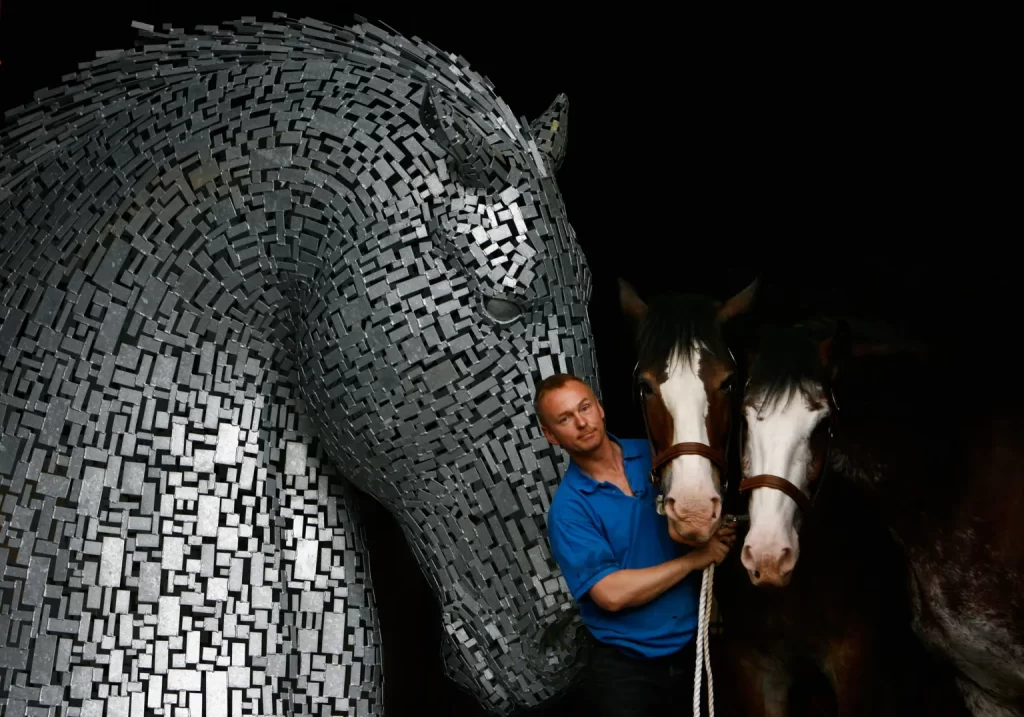
Community response has largely been positive, with residents bringing deck chairs to watch the installation process. Scott sees parallels between the project and his previous work in Falkirk, suggesting both serve as catalysts for regional improvement.
“Some are making good observations about the city and how it needs help in other directions,” Scott acknowledged, “but they’re putting it in the context that was intended that it’s about enhancing that environment and other social issues aren’t really the remit of the artist so let’s see it as a catalyst for onward improvement.”

